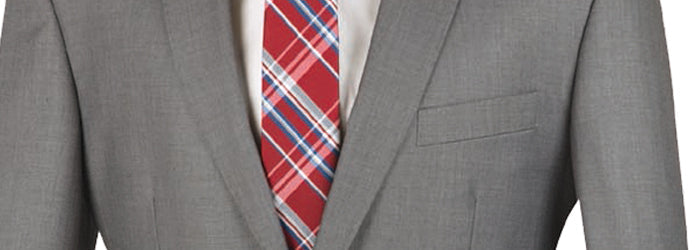Welcome to the fourth in a series on the anatomy of a suit. In the first part we covered the types of fit. In the second we covered the different styles of suits. And the third we covered the lapels. Let’s continue with the other parts of the blazer.
Probably the most overlooked parts of the blazer are the pockets. In general, they aren’t very flashy, don’t seem to have an important purpose other than to carry stuff in and don’t elicit any great excitement over them. Hopefully we’ll be able to change your mind and prove to you how essential pockets are to style, function and elegance.
Pocket Types
We’ll start with the top outer breast pocket better known as the Welt Pocket.
Welt Pocket

The Welt Pocket is an inset pocket between the outer material and the inner lining of the jacket. The opening, or slit, is either reinforced with stitching or with an extra piece of material called a welt, thus the name.
Contrary to popular belief, welt pockets are actual pockets. Most pockets on a jacket come stitched closed and can be opened by snipping the threads with a scissor and revealing the pocket. How else are you going to get that pocket square in there?
Moving down the jacket we get to the 2 hip pockets, which can come in a variety of styles.
Flap Pocket

This is the most common type of pocket on a jacket and just as the name suggests, it’s a pocket with a flap over the opening.
Not only is it the most ubiquitous, it is also the most versatile as it can come straight, slanted, regular, narrow, extra wide, sharp cornered, and even round cornered.
It’s really the jack-of-all-trades pocket that would not seem out of place at any occasion other than a black-tie affair.
Jetted Pocket

Jetted pockets, also known as Piped Pockets or Besom Pockets are the next up. They’re called Jetted Pockets because one or two narrow pieces of fabric are sewn into a cut in the garment to frame the pocket opening, one on the top and one on the bottom. They have no flaps. They are more dressy, sophisticated and formal. Perfect for Black Tie affairs. Most tuxedos have besom pockets as they offer a sleek silhouette.
Patch Pockets

Patch Pockets are the oldest style of pockets as they are they were earliest attempts at constructing pockets. These are made from a separate piece of clothing and sewn to the outside of the jacket.
Because they sit outside the jacket and are clearly visible, they lend an air of casualness to the outfit. They are best for sportscoats (blazers) and informal wear.
Ticket Pockets

Rooted in history as an extra pocket where gentlemen placed their train or theater tickets, the ticket pocket was popular and functional.
Usually located above the right hip pocket, the ticket pocket is slightly smaller but the same style as the lower pocket. It can be flapped, jetted, straight or slanted.
Nowadays, this type of pocket isn’t very functional, however it does offer a taste of traditional style and is best suited for a formal event.
Straight Pockets or Slanted Pockets
This portion is geared more towards the angle of the pocket rather than the type. Both are self-explanatory but let’s go over the essentials.
Straight Pockets

Straight pockets are, as the name implies, straight. This means that the opening of the pocket runs from the back to the front in a straight line, parallel to the floor. The pocket can be either flap or jetted.
This is the most traditional orientation of pockets and the standard for most suit jackets. Keep in mind that the straight pocket will give the wearer an appearance of more bulk on the sides, great if you’re on the thin side.
Slanted Pockets

Once again, pretty straight forward (no pun intended). Slanted pockets, or Hacking pockets, are slanted, lower towards the rear and higher towards the front. This style of pocket has its history in English equestrian sports. The horseback rider is generally leaning forward so the opening of the slanted pocket actually becomes parallel to the ground and made retrieving items in the pockets much easier.
This look has continued in modern sports coats as they can give the appearance of slimness in the hips when the eye follows the path of the pocket as it moves up.
Conclusion
So, as you can see, there is a lot to a man's suit pockets than just a place to put your keys in. They personify aesthetics, function and even history.

